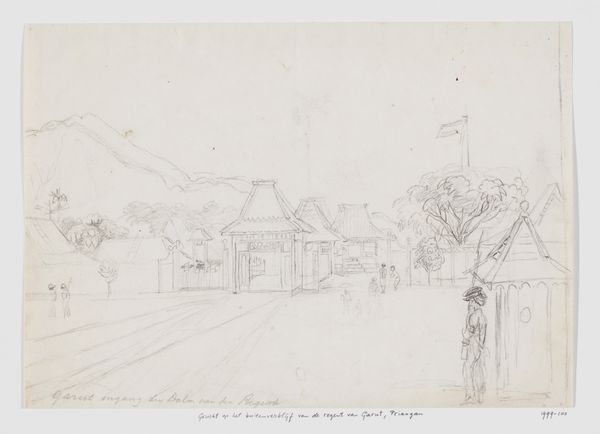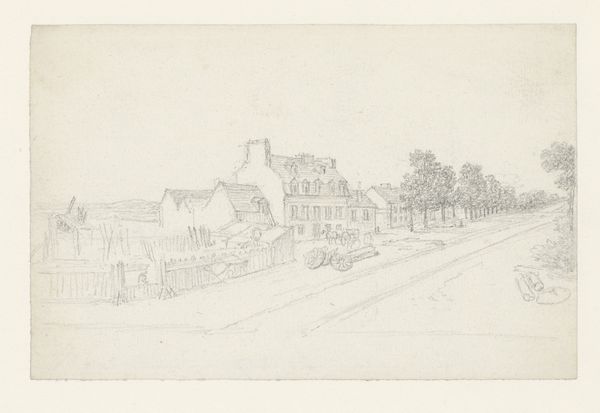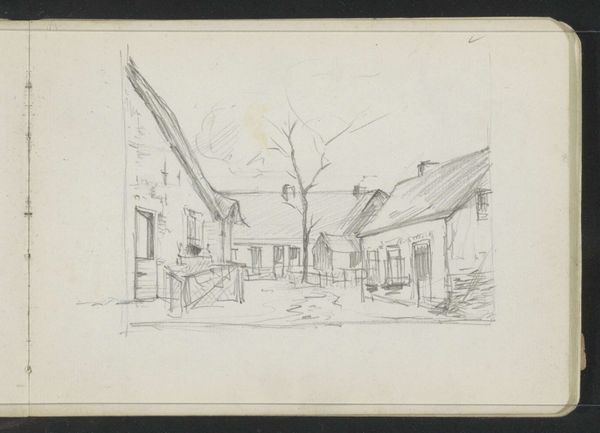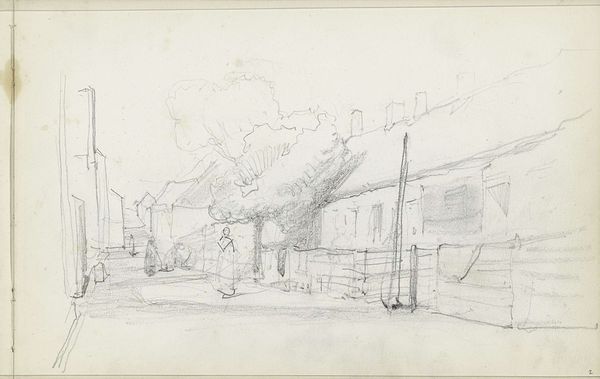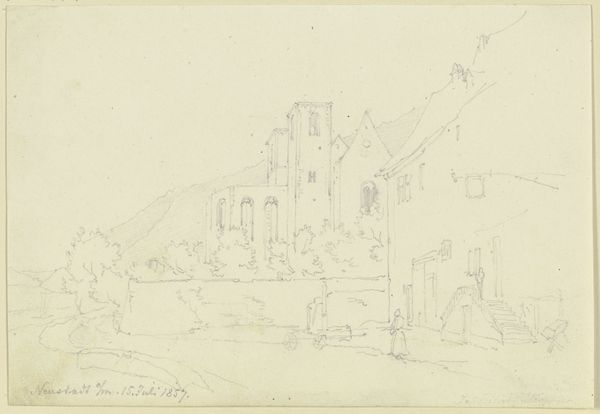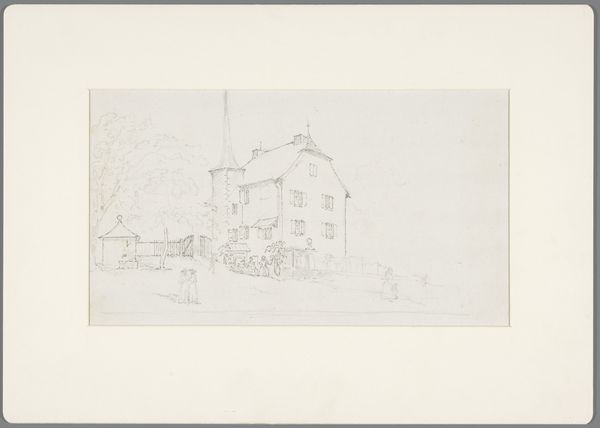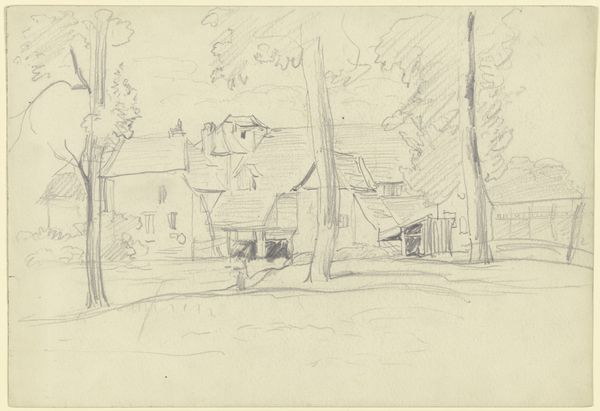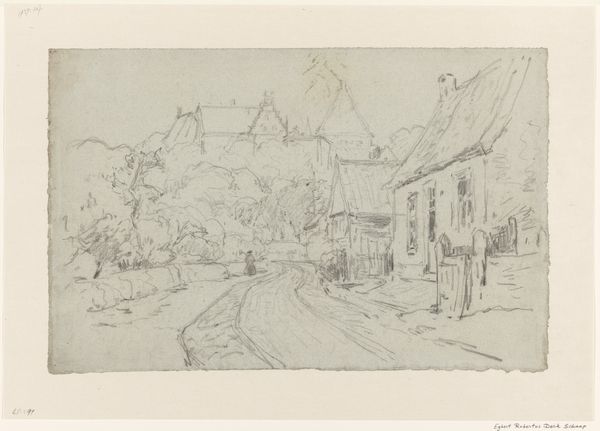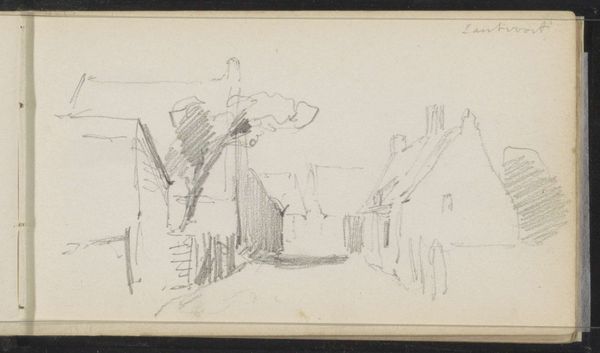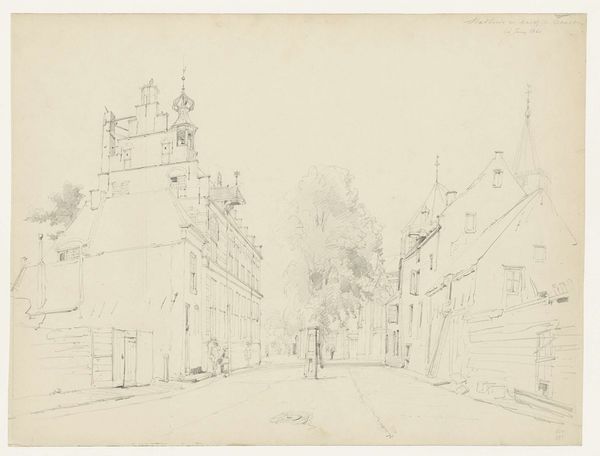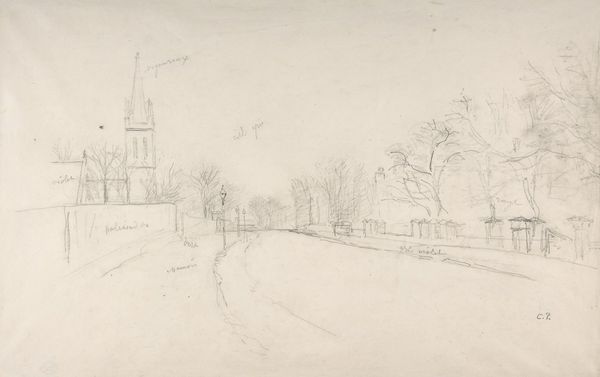
drawing, plein-air, pencil
#
drawing
#
plein-air
#
pencil sketch
#
landscape
#
etching
#
pencil
#
realism
Dimensions: height 192 mm, width 312 mm
Copyright: Rijks Museum: Open Domain
Curator: Looking at this subtle pencil sketch, “De Breesaap bij Velsen, Noord-Holland,” created around 1865 by Adrianus Johannes Bik, a wave of tranquility washes over me. It is a beautifully understated snapshot in time. Editor: It’s interesting that you describe it as tranquil. My first impression is of the immense emptiness—even alienation—that this scene conveys. Consider, in its historical context, what emptiness communicated in a rapidly industrializing world. Curator: I see your point about the emptiness. Let's remember Bik's focus on plein-air drawing. The broad landscape in the background definitely echoes Realism's concerns, perhaps also commenting on a sort of societal barrenness mirrored in the land itself. It speaks of Dutch identity caught at a moment of transformation. How did this aesthetic resonate with the middle class during this period, eager to connect with authentic and humble country life? Editor: The choice of imagery must be understood within a network of patrons, art dealers, and exhibition venues, including the rise of the Rijksmuseum itself and what that meant for the public presentation of Dutch identity. His approach offered something reassuringly familiar. But what political nuances are possibly glossed over when romanticizing these simple pastoral scenes? Was it truly a portrayal of 'real' Dutch life or merely a comforting visual construct catering to bourgeois sentiment? Curator: Definitely a construct! Bik isn't passively documenting reality; instead, he strategically engages with the concept of Dutch identity, possibly to evoke nationalistic feelings. Furthermore, look at the single female figure barely discernible. Does her obscured presence say something more extensive about gender roles and women’s limited presence in society during this epoch? Editor: I find that perspective extremely useful. Art is so often enlisted in forming national identity and cementing particular class structures. So, beyond appreciating the draftsmanship and landscape, we need to unpack this historical work's intricate tapestry of power and representation. Curator: Absolutely, examining artworks like "De Breesaap bij Velsen" allows us not only to perceive the aesthetic ideals of the mid-19th century but also to reveal deeper social, cultural, and gender narratives woven within them. Editor: Agreed, understanding how the scene played into a network of socio-economic relations at a crucial historical juncture grants deeper insights into Dutch culture and the evolution of its political sensibilities.
Comments
No comments
Be the first to comment and join the conversation on the ultimate creative platform.
